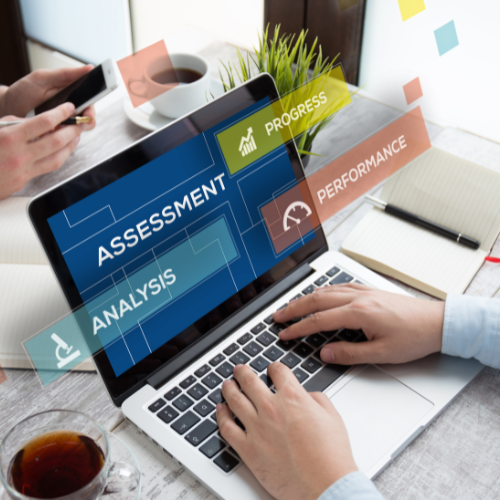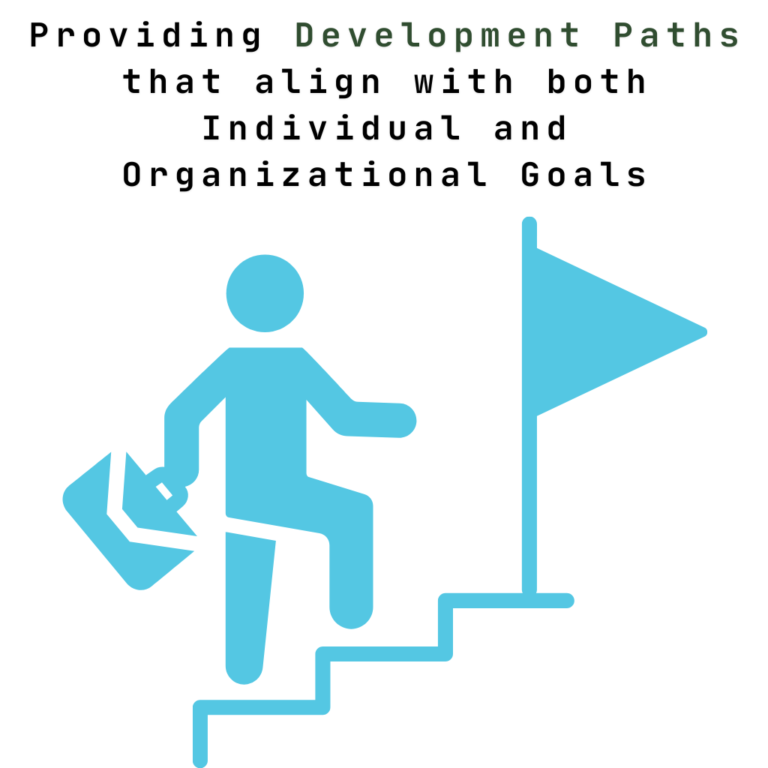Talent Assessment & Succession Planning
Gain insight into your existing talent pool and identify the skills necessary for your organization’s success.

Fulfilling Your Business's Leadership Needs: Building a Diverse and Differentiated Bench
To capitalize on business opportunities, you need to know what your current talent is capable of and what talent you should be seeking across all levels of the organization, including the talent market in which you compete.
Our assessment and succession solutions give you an objective, actionable picture of the talent you need, the talent you have and how to close the gap. Your business strategy is only possible if you have the enterprise talent to deliver today and into the future.
Challenges That You Are Overlooking



How Can We Help?
We swiftly and reliably evaluate both internal and external talent using our expertise in science, research, and decades of development. Our findings guide your decisions in talent selection, promotion, and development.
Leadership & Professional Assessment
We assess performance, potential, readiness, and cultural alignment for each individual, providing insights on areas for professional development investment.
Succession Planning
We identify and groom the next generation of leaders, ensuring they’re ready for the challenges ahead. Your chain of employees who are ready to succeed you when the time comes.
Training & Certification
Elevate your team’s skills with our IP certification training for digital applications, sales training, and project management certificate programs.
Assess, Develop, and Transform Your Key Talent
At HCN, we recognize the pivotal role that precise talent assessment plays in steering companies towards success. Our specialized Assessment and Development Centers are at the forefront of identifying and enhancing the capabilities of your Mid to Senior-Level Employees.
Utilizing a blend of rigorous methodologies and real-time simulations, HCN Connect provides a unique assessment approach. Our centers are designed not just to evaluate, but to uncover the underlying potential of your leaders through:
In-depth Competency Assessments” are a critical component of any thorough talent management strategy, particularly for identifying and nurturing leadership potential within an organization. Here’s a breakdown of how these assessments work and the key competencies they typically evaluate:
Decision Making: Assessing the ability to make sound decisions under pressure, incorporating analytical thinking and problem-solving skills. It includes evaluating scenarios to determine an individual’s judgment in choosing the most effective course of action.
Leadership: This involves measuring capabilities such as directing teams, motivating staff, and driving organizational goals. It looks at both individual leadership (how a person leads themselves and their direct responsibilities) and group leadership dynamics.
Judgment and Analysis: Understanding how an individual analyzes information, anticipates issues, and evaluates alternatives. This competency checks for critical thinking and the ability to handle complex situations with strategic foresight.
Risk Management: Evaluating the ability to identify, evaluate, and prioritize risks in a way that ensures the best outcomes for the organization. This includes the capacity to innovate and take calculated risks when necessary.
Interpersonal Skills: These are crucial for effective communication, conflict resolution, and team collaboration. Assessments may simulate scenarios to see how well an individual interacts with others, manages disagreements, and inspires team members.
Organizational Awareness: Understanding and navigating the culture, dynamics, and politics within an organization. It involves assessing how well an individual aligns their work and leadership style with the overarching goals and values of the organization.
How It’s Done:
In-depth competency assessments often employ a variety of tools and techniques, such as:
- Psychometric Tests: To quantitatively measure personality traits and cognitive abilities.
- Behavioral Interviews: Where candidates are asked to describe past experiences that demonstrate their skills in relation to the competencies being assessed.
- Simulation Exercises: Including role plays, business scenario analyses, or situational judgment tests that mimic job-related tasks.
360-Degree Feedback: Gathering insights from an employee’s manager, peers, direct reports, and sometimes clients to provide a comprehensive view of their competencies.
The Value for Succession Planning:
These assessments are particularly valuable in succession planning, as they help organizations identify employees who not only excel in their current roles but also possess the potential to take on more significant responsibilities in the future. By understanding the specific competencies of individuals, organizations can more effectively plan for leadership transitions, ensuring that the right people are in place to lead the organization forward.
Overall, in-depth competency assessments are about gaining a deep understanding of the existing talent within the organization and using that information to make strategic decisions about leadership development and succession planning.
Tailored Development Programs are essential components of effective talent management strategies, particularly when it comes to cultivating leadership and ensuring continuous professional growth within an organization. These programs are customized to the specific needs of individuals and the strategic goals of the organization, focusing on filling competency gaps identified through in-depth assessments.
Components of Tailored Development Programs:
Individualized Learning Plans: Based on the results of competency assessments, each participant receives a personalized learning plan that targets their specific areas for improvement. This might include leadership training, advanced technical skills education, or soft skills enhancement.
Mentoring and Coaching: One-on-one mentoring or coaching is a significant element of these programs, providing individuals with guidance, feedback, and support from experienced leaders within the organization or external experts. This helps in refining their skills, improving their performance, and preparing them for higher responsibilities.
Workshops and Seminars: These are often included to provide hands-on experiences in areas such as strategic thinking, decision-making, and interpersonal communication. Workshops are particularly effective in developing soft skills that are crucial for leadership roles.
On-the-job Training: Applying new skills in real-world scenarios is vital for reinforcement. Tailored development programs often include structured on-the-job training elements, where participants can work on special projects or shadow other roles to gain practical experience.
E-Learning Modules: To accommodate flexible learning schedules, e-learning resources tailored to specific competencies can be included. These modules allow participants to learn at their own pace and can be particularly effective in delivering technical or specialized content.
Feedback Mechanisms: Continuous feedback is integral to the learning process. Development programs often incorporate regular review points where participants receive constructive feedback on their progress, allowing for adjustments to the learning plan as needed.
Benefits of Tailored Development Programs:
- Enhanced Role Suitability: These programs ensure that employees are not only prepared for their current roles but are also developing the skills needed for future positions.
- Increased Engagement: By investing in employees’ professional growth, organizations can boost job satisfaction, retention, and loyalty.
- Alignment with Organizational Goals: Customized development aids in aligning individual growth with the strategic objectives of the company, ensuring that development efforts support overall business goals.
- Leadership Pipeline: By systematically addressing the development needs of potential leaders, organizations can create a robust pipeline of ready and capable individuals to fill key positions.
Tailored Development Programs are crucial for organizations aiming to maintain a competitive edge, adapt to changing market conditions, and ensure that they have the leadership talent necessary to face future challenges effectively.
Strategic alignment with organizational goals is a fundamental aspect of effective talent management, especially when it comes to the development and assessment of mid to senior-level employees. This alignment ensures that individual growth and organizational strategies are synchronized, leading to more coherent and successful business outcomes.
What is Strategic Alignment with Organizational Goals?
Strategic alignment refers to the process of aligning the development, performance, and capabilities of employees with the broader objectives and strategic directions of the organization. It ensures that all human resource initiatives support the overarching goals of the company, from increasing market share to improving operational efficiencies or fostering innovation.
Key Aspects of Strategic Alignment:
Goal-Oriented Development Programs: Development initiatives are designed to directly support the achievement of specific organizational goals. For instance, if a company aims to enhance its innovation capabilities, the tailored development programs for potential leaders will focus on skills like creative thinking, risk assessment, and agile decision-making.
Alignment of Competencies with Business Needs: Competencies that are critical for the success of the business are identified and emphasized in the assessment and development processes. This ensures that employees not only develop personally but also contribute effectively to the business’s strategic needs.
Performance Management Systems: These systems are tailored to evaluate employee performance through the lens of strategic business objectives. Performance metrics are designed to reflect contributions towards these goals, thus promoting activities that are directly linked to organizational success.
Succession Planning: Strategic alignment includes planning for future leadership based on the strategic direction of the organization. It involves preparing potential leaders to take on roles that are crucial for the future growth and sustainability of the company.
Feedback and Adjustment Processes: Regular feedback mechanisms ensure that employee development remains aligned with any shifts in business strategy. This adaptability is crucial in responding to dynamic market conditions and evolving industry standards.
Benefits of Strategic Alignment:
- Enhanced Business Performance: When employee goals and competencies are aligned with organizational strategies, it drives greater efficiency and effectiveness in achieving business objectives.
- Improved Resource Utilization: Strategic alignment helps in optimizing the allocation of resources towards development and training that yield the highest return in terms of business value.
- Increased Employee Engagement: Employees are more engaged and motivated when they understand how their work contributes to the larger goals of the organization. This increases their commitment and satisfaction.
- Better Change Management: Aligned organizations are better prepared to manage change as they have a clear vision of their goals and the roles employees play in reaching them, facilitating smoother transitions and adaptations.
In essence, strategic alignment between individual development and organizational goals is crucial for building a workforce that is not only skilled and competent but is also deeply integrated into the fabric of the organization’s long-term strategic plan. This alignment is a key driver of organizational success and sustainability, particularly in a competitive and fast-evolving business environment.
Join us in shaping your success story.
Contact us today to explore how our consulting services can propel you toward your business goals.
Schedule A CallUnlock the Power of Assessment & Succession with HCN
With decades of expertise and a rich tapestry of client successes, HCN stands as a APAC authority on leadership assessment, talent development, and succession planning. In this guide, we unveil the inner workings of our approach to assessment and succession.
Explore our Define > Assess > Develop model, a tried-and-tested, adaptive framework that generates data-driven, actionable insights. This model seamlessly integrates with your organization, propelling your talent and leadership forward in alignment with evolving work culture trends.
Navigating assessment and succession planning can be complex. Trust in a partner who can decode the puzzle pieces and align them with your organization’s trajectory and methods.
*By submitting this form you are accepting to receive emails and messages from HCN.
